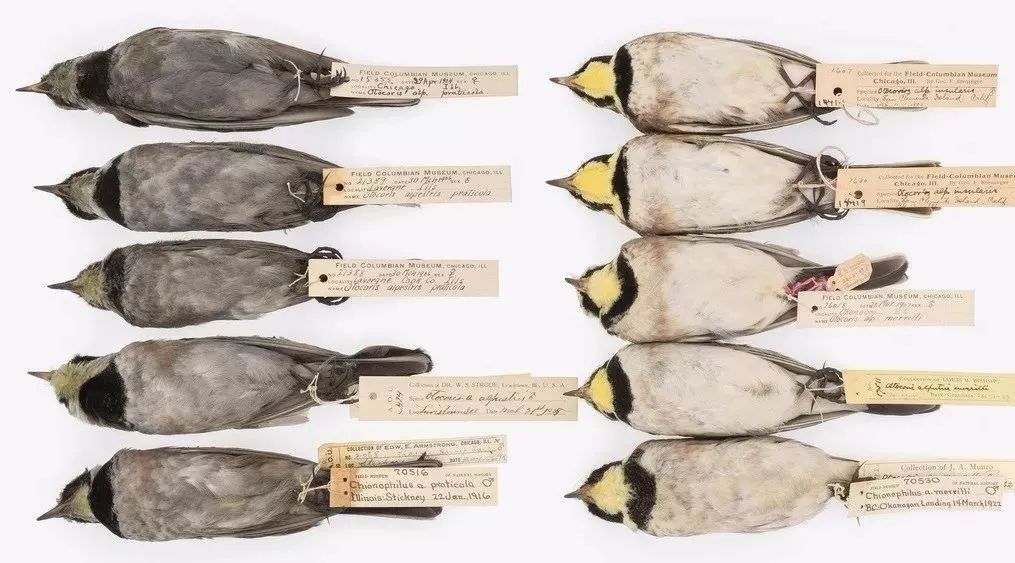
In the American industrial belt at the beginning of the last century, manufacturing flourished, but soot pollution was suffocating. These old air pollution still remains on the feathers of bird specimens in the museum.
the birds in the picture are all Eremophila alpestris specimens from the Natural History Museum. They all belong to the same species, but the specimens on the left and right look different: the feathers on the bellies of the birds on the left are darker and darker.
Why are they so different? The answer is that the column on the left was collected from the "industrial belt" of the United States at the beginning of the last century, while the one on the right came from the west coast far from the industrial zone.
cities such as Chicago, Detroit and Pittsburgh are in the middle of traditional American industrial belts, where manufacturing has boomed since the mid-19th century, while soot pollution in the air has risen sharply. In the 1930s, people began to notice that in the soot-shrouded industrial area, the birds' feathers became darker.
scientists can't help but wonder whether birds produce more pigments themselves, or are they blackened by the environment? Now, looking closely under a scanning electron microscope, the researchers say: these black birds are simply soiled by carbon particles released into the air. In other words, there is a dirty truth about the old air pollution in these nearly century-old bird specimens.
(compared with the sample of Tian Finch bunting from 1906 to 1996, the lower row is an electron microscope image with obvious particles attached on one side of 1906)
but it's not easy to do this. The first way to predict the future is to understand the past, and researchers need reliable data on air pollution in history to know how much impact these particles have had in the past. In the United States in the first half of the last century, there was little systematic air pollution monitoring data. In many cases, researchers can only calculate indirectly from the data of fuel consumption.
and the black specimens of birds lying in the museum bring new opportunities. The feathers of the specimens are attached to carbon particles from the air in the past, and the birds change their feathers once a year, so they can be used as an "air sample" from the year they were collected. Compared with previous projections, these samples reflect the local situation more directly at that time.
(another set of red-headed woodpecker specimens)
for the birds, the results of the analysis were bad news: the air pollution at that time was serious and even worse than previously estimated. However, these data also help researchers learn more about the impact of air pollution on the environment. This may be helpful to model revision and policy making in the future.
the authors also expressed their heartfelt thanks to the contributors to the natural history collection: without these well-documented specimens, such a study would not have been possible. "in the early 20th century, specimen collectors could not have imagined that two Chicago graduate students would use these birds to paint a picture of the atmospheric environment at that time." Said Shane G. DuBay, one of the authors of the paper.
sources and picture sources:
Shane G. DuBay and Carl C. Fuldner. Bird specimens track 135 years of atmospheric black carbon and environmental policy. PNAS, October 9, 2017 DOI: 10.1073/pnas.1710239114
Choosing our collection of vintage wedding dresses might just be the best decision you have ever made. The available collection can go well with all occasion.